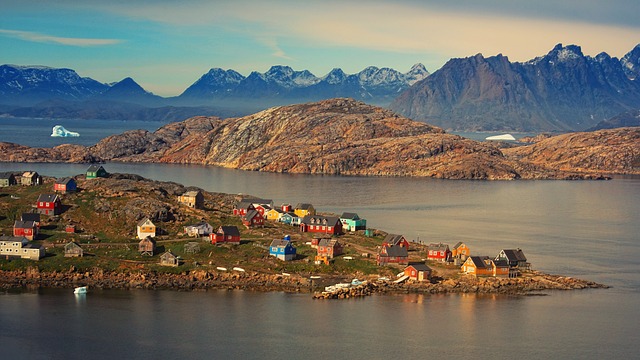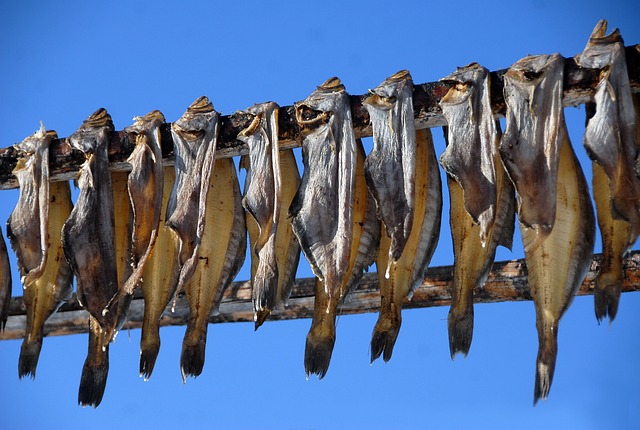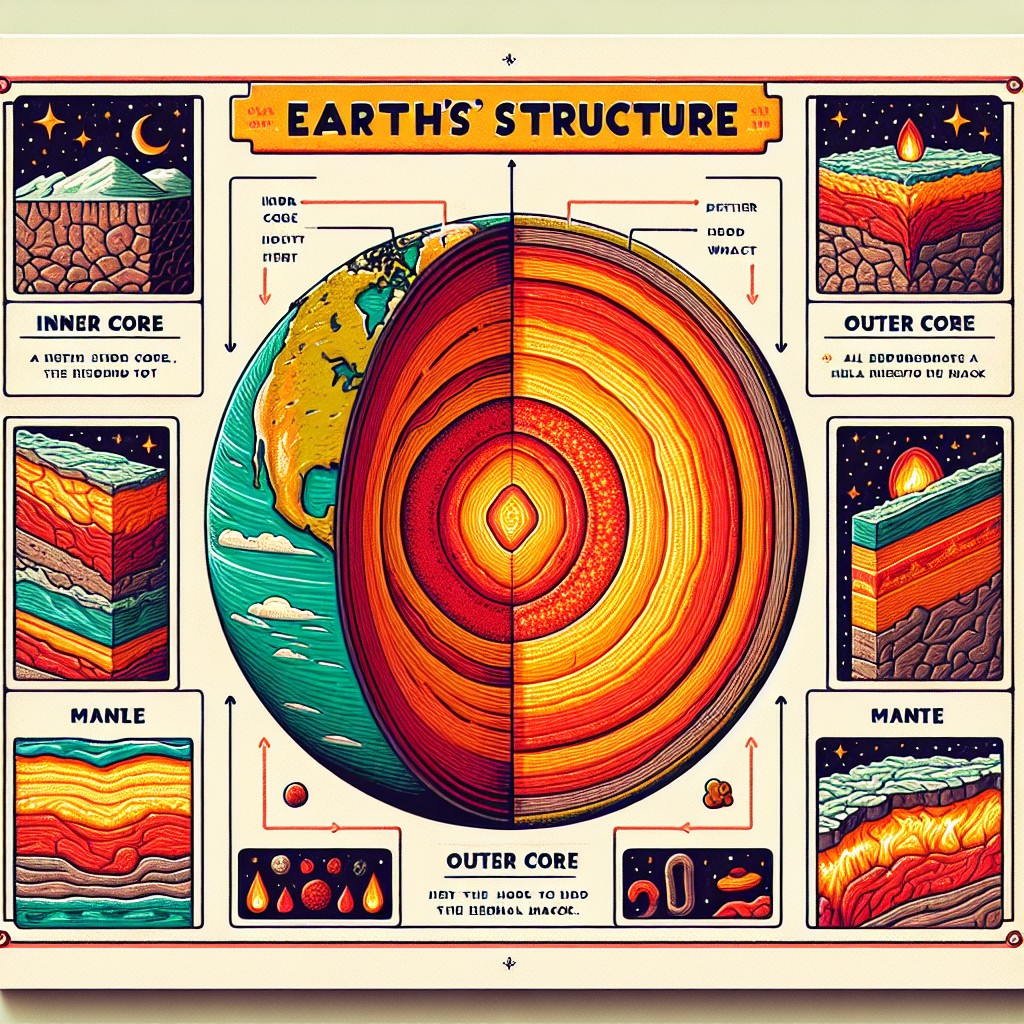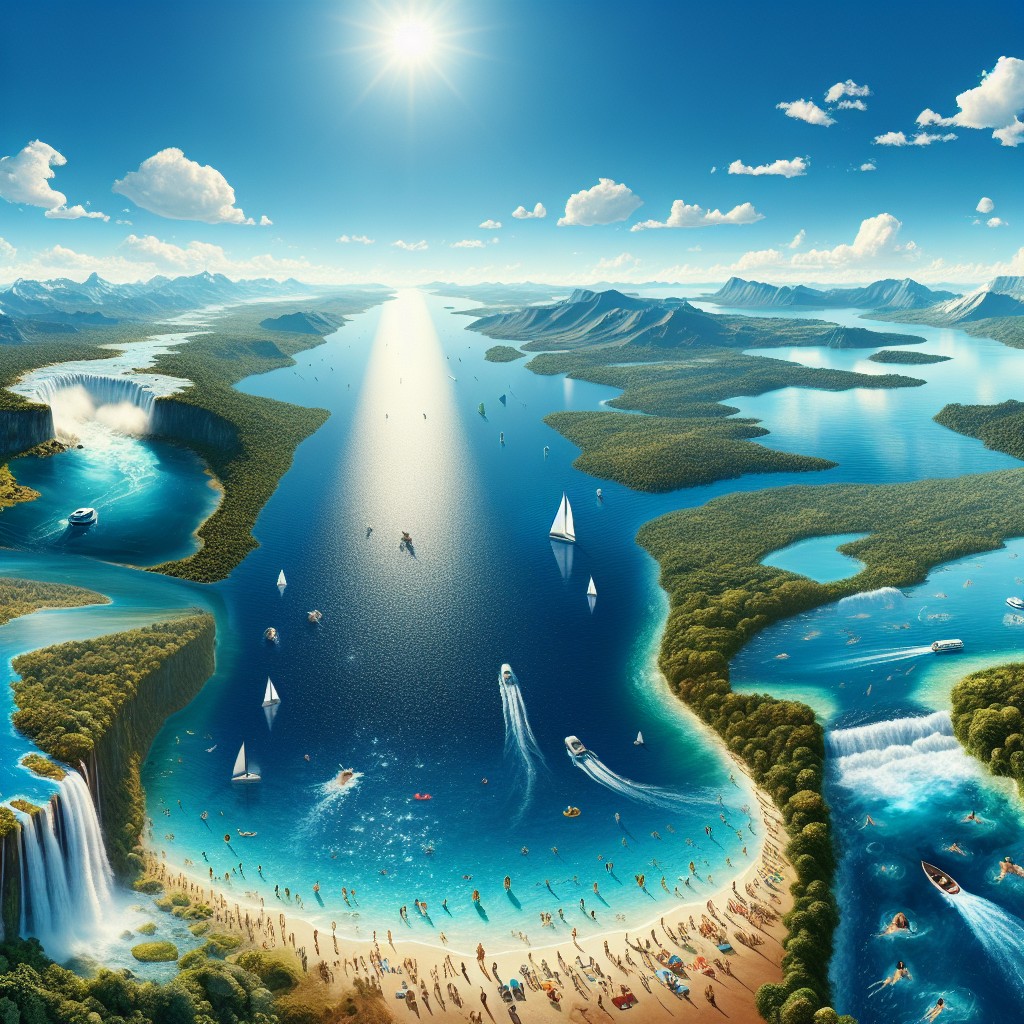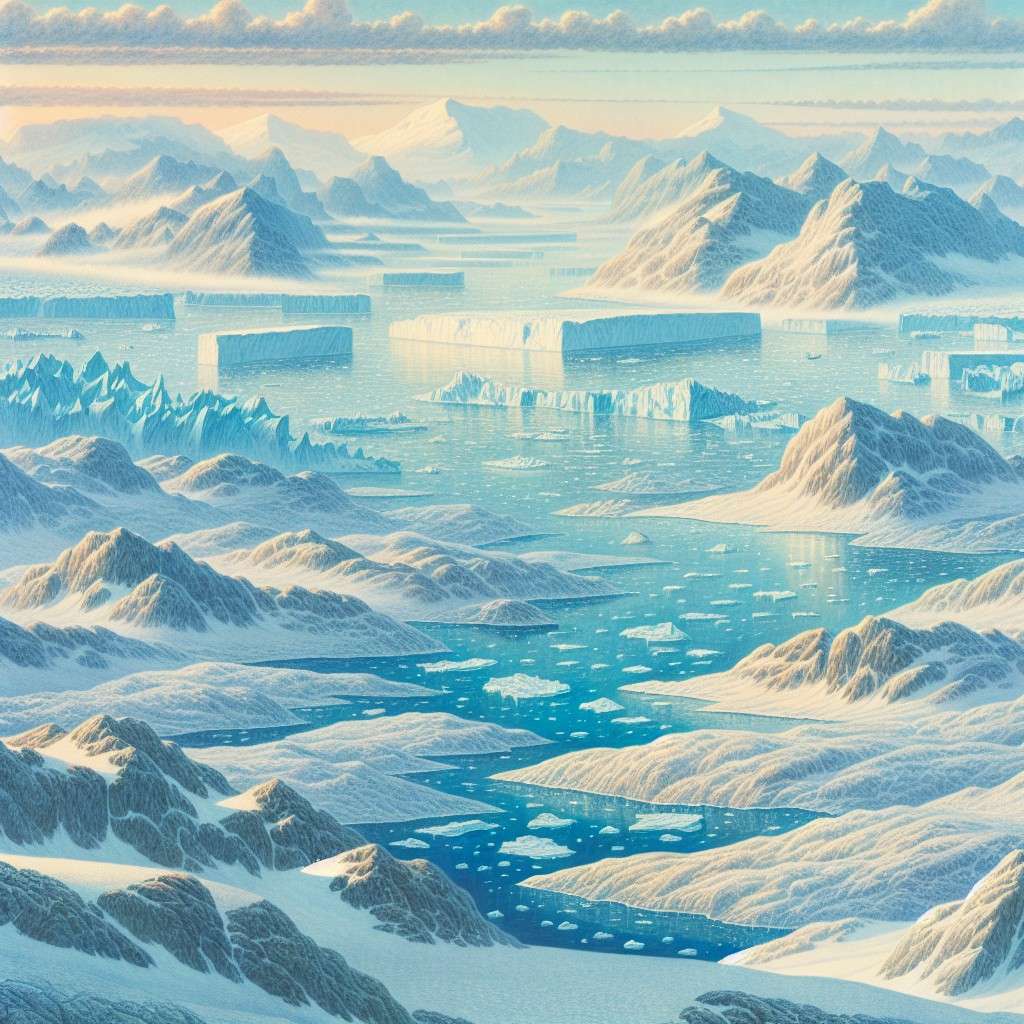
Greenland, the world’s largest island, is known for its vast and diverse natural resources. From mineral deposits to oil and gas reserves, renewable energy potential, fisheries, aquaculture, forestry, and agriculture, Greenland is rich in natural resources that have the potential to drive economic growth and development. The island’s unique geographical location and climate make it a hotspot for various natural resources, attracting the attention of investors and researchers from around the world.
Greenland’s natural resources play a crucial role in the island’s economy, providing employment opportunities and contributing to its overall GDP. As the global demand for natural resources continues to rise, Greenland’s potential as a key player in the natural resource market becomes increasingly significant. However, the sustainable management and conservation of these resources are essential to ensure their long-term viability and to mitigate any negative environmental impacts. In this article, we will explore the various natural resources found in Greenland, their potential for economic development, and the importance of sustainable management practices to preserve these valuable assets for future generations.
Summary
- Greenland is rich in natural resources, including minerals, oil and gas reserves, renewable energy potential, fisheries and aquaculture, forestry, and agriculture.
- Mineral resources in Greenland include rare earth elements, uranium, iron ore, and gemstones, making it an attractive destination for mining companies.
- Greenland has significant potential for oil and gas reserves, with exploration and extraction activities being carried out in the region.
- The country also has abundant renewable energy potential, including hydropower, wind energy, and solar energy, which can contribute to its sustainable development.
- Fisheries and aquaculture play a crucial role in Greenland’s economy, with a focus on sustainable management and conservation of marine resources.
Key Natural Resources in Greenland
-
Rare Earth Elements (REEs)
- Greenland has some of the world’s largest deposits of rare earth elements, critical for manufacturing electronics, renewable energy technologies, and defence systems.
- The Kvanefjeld project in southern Greenland is one of the most significant REE mining prospects globally.
-
Minerals
- Greenland is rich in other valuable minerals, including:
- Gold
- Diamonds
- Uranium (controversial due to environmental concerns)
- Zinc
- Iron ore
- Platinum group metals
- Greenland is rich in other valuable minerals, including:
-
Oil and Gas
- The Arctic waters around Greenland are believed to contain substantial oil and natural gas reserves.
- Estimates suggest there could be billions of barrels of untapped oil, though the harsh climate and environmental risks make exploration challenging.
-
Marine Resources
- Greenland’s fishing industry, particularly for shrimp and halibut, is a cornerstone of its economy and a renewable natural resource.
-
Hydropower
- With abundant freshwater from melting glaciers, Greenland has significant potential for developing hydropower to support energy-intensive industries and reduce reliance on imported fuels.
Valuation and Economic Potential
The exact value of Greenland’s natural resources is difficult to quantify due to varying market conditions, extraction costs, and political considerations. However, the resources are estimated to be worth hundreds of billions of dollars over the long term, depending on successful exploration and sustainable extraction.
Mineral Resources in Greenland
Greenland is home to a wide range of mineral resources, including rare earth elements, iron ore, zinc, lead, gold, diamonds, and uranium. The island’s mineral wealth has attracted significant interest from mining companies and investors looking to capitalize on the growing global demand for these resources. Greenland’s vast mineral deposits are largely untapped, presenting a significant opportunity for economic growth and development.
The exploration and extraction of mineral resources in Greenland have the potential to create jobs, stimulate local economies, and generate revenue for the government. However, the mining industry also poses environmental challenges, including habitat destruction, water pollution, and greenhouse gas emissions. It is essential for the government and mining companies to implement sustainable mining practices to minimize these impacts and ensure the long-term viability of Greenland’s mineral resources. By investing in responsible mining technologies and practices, Greenland can harness its mineral wealth while protecting its unique natural environment.
Oil and Gas Reserves in Greenland
Greenland’s offshore waters are believed to hold significant oil and gas reserves, making the island a potential player in the global energy market. The exploration and extraction of oil and gas have the potential to boost Greenland’s economy and reduce its reliance on imported energy sources. However, the development of oil and gas reserves also raises concerns about environmental impacts, including oil spills, air and water pollution, and habitat destruction.
The government of Greenland has been working to attract investment in its oil and gas sector while ensuring that environmental regulations are in place to mitigate potential risks. The sustainable management of oil and gas reserves is crucial to minimize environmental impacts and protect Greenland’s unique marine ecosystems. By implementing strict regulations and investing in advanced technologies for oil and gas exploration and extraction, Greenland can harness its energy potential while safeguarding its natural environment for future generations.
Renewable Energy Potential in Greenland
Greenland’s geographical location and climate make it an ideal candidate for renewable energy development. The island has abundant renewable energy resources, including hydropower, wind power, solar energy, and geothermal energy. The harnessing of these renewable energy sources has the potential to reduce Greenland’s reliance on imported fossil fuels and mitigate the impacts of climate change.
Hydropower is one of the most significant renewable energy sources in Greenland, with numerous rivers and waterfalls that can be harnessed for electricity generation. Wind power also holds great potential, particularly in coastal areas where strong winds are prevalent. Additionally, solar energy and geothermal energy offer alternative sources of renewable power that can contribute to Greenland’s energy independence.
Investing in renewable energy infrastructure can create jobs, stimulate economic growth, and reduce greenhouse gas emissions. By transitioning towards a more sustainable energy mix, Greenland can position itself as a leader in renewable energy development while contributing to global efforts to combat climate change. However, it is essential to consider the potential environmental impacts of renewable energy projects and ensure that they are developed in a sustainable manner that respects Greenland’s natural landscapes.
Fisheries and Aquaculture in Greenland
Greenland’s rich marine ecosystem supports a thriving fisheries industry, with abundant stocks of fish, shrimp, crab, and other seafood. The fishing industry plays a crucial role in Greenland’s economy, providing employment opportunities and contributing to the island’s food security. Additionally, aquaculture has been identified as a potential growth area for Greenland, with opportunities to farm fish species such as salmon and Arctic char.
Sustainable management of fisheries is essential to ensure the long-term viability of marine resources in Greenland’s waters. Overfishing, habitat destruction, and bycatch are some of the challenges facing the fishing industry that need to be addressed through effective regulations and conservation measures. Furthermore, the development of aquaculture presents opportunities to supplement wild-caught seafood with sustainably farmed fish, reducing pressure on wild fish stocks.
By implementing responsible fishing practices and investing in sustainable aquaculture technologies, Greenland can continue to benefit from its rich marine resources while preserving the health of its oceans. The fishing industry not only provides economic opportunities but also plays a vital role in maintaining the ecological balance of Greenland’s marine ecosystems.
Forestry and Agriculture in Greenland
Greenland’s unique climate presents challenges for traditional agriculture; however, there are opportunities for sustainable forestry and agriculture in certain regions of the island. The cultivation of crops such as potatoes, turnips, and other root vegetables is possible in southern Greenland, where milder temperatures prevail during the summer months. Additionally, forestry has the potential to provide timber resources for construction and fuel.
The sustainable management of forestry and agriculture is essential to prevent soil erosion, preserve biodiversity, and protect fragile ecosystems. Climate change poses additional challenges for agriculture in Greenland, with shifting weather patterns impacting crop yields and growing seasons. By investing in innovative agricultural techniques such as greenhouse farming and agroforestry, Greenland can enhance its food security and reduce its reliance on imported goods.
Conservation measures are also crucial to protect Greenland’s natural landscapes from deforestation and habitat destruction. Sustainable forestry practices can ensure that timber resources are harvested responsibly without compromising the health of forest ecosystems. By promoting sustainable agriculture and forestry practices, Greenland can support local food production while preserving its unique natural environment.
Conservation and Sustainable Management of Greenland’s Natural Resources
The conservation and sustainable management of Greenland’s natural resources are essential to ensure their long-term viability and protect the island’s unique ecosystems. The government of Greenland has been working to establish protected areas and conservation measures to safeguard its natural landscapes from overexploitation and habitat destruction. Additionally, international collaboration with other countries and organisations can support efforts to conserve biodiversity and mitigate the impacts of climate change on Greenland’s environment.
Sustainable management practices are crucial for all sectors that rely on natural resources, including mining, energy development, fisheries, aquaculture, forestry, and agriculture. By implementing strict regulations, investing in advanced technologies, and promoting responsible practices, Greenland can harness its natural resources while minimising environmental impacts. Furthermore, public awareness and education about the importance of conservation can foster a culture of environmental stewardship among local communities.
In conclusion, Greenland’s natural resources hold significant potential for economic development while also presenting challenges for environmental conservation. By prioritising sustainable management practices across all sectors, Greenland can balance economic growth with environmental protection. The responsible harnessing of mineral resources, oil and gas reserves, renewable energy sources, fisheries, aquaculture, forestry, and agriculture can support the island’s economy while preserving its unique natural environment for future generations to enjoy.
Challenges and Opportunities
-
Challenges
- Environmental Concerns: Mining and oil exploration could harm Greenland’s pristine Arctic environment.
- Infrastructure: Limited infrastructure makes resource extraction logistically challenging.
- Geopolitical Sensitivities: Greenland’s resources have drawn interest from global powers, including the U.S., China, and the EU, raising questions about sovereignty and influence.
-
Opportunities
- Diversifying Greenland’s economy, which currently relies heavily on fishing and subsidies from Denmark.
- Playing a pivotal role in the global transition to renewable energy through rare earth element production.
Conclusion
Greenland’s natural resources represent a significant opportunity for economic growth and development, but their extraction must be carefully managed to balance economic, environmental, and social considerations. As interest in Arctic resources grows, Greenland’s wealth of natural assets will likely remain a focal point of global attention.
FAQs
What are the main natural resources of Greenland?
Greenland’s main natural resources include minerals such as zinc, lead, gold, iron ore, and rare earth elements, as well as potential oil and gas reserves.
Where are the mineral resources located in Greenland?
Mineral resources in Greenland are located in various regions across the country, including the Kangerlussuaq area, the Fiskenæsset region, and the Kujalleq area.
Where are the potential oil and gas reserves located in Greenland?
Potential oil and gas reserves in Greenland are located offshore in the waters of Baffin Bay and the Davis Strait, as well as in the northeastern part of the country.
What are the challenges associated with extracting natural resources in Greenland?
Challenges associated with extracting natural resources in Greenland include the harsh Arctic climate, remote locations, environmental concerns, and the need for infrastructure development.
How does Greenland manage its natural resources?
Greenland manages its natural resources through the Ministry of Mineral Resources, which oversees the exploration and extraction of minerals, as well as the potential development of oil and gas reserves. The government also works to ensure sustainable and responsible resource management.
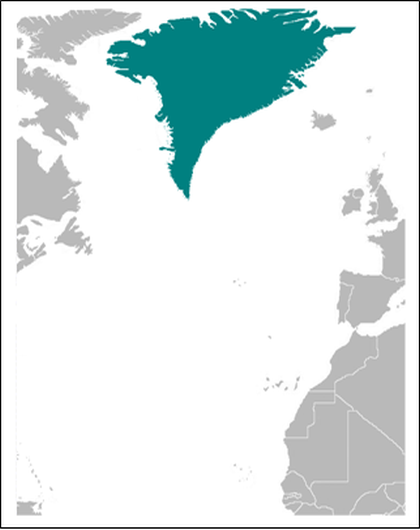
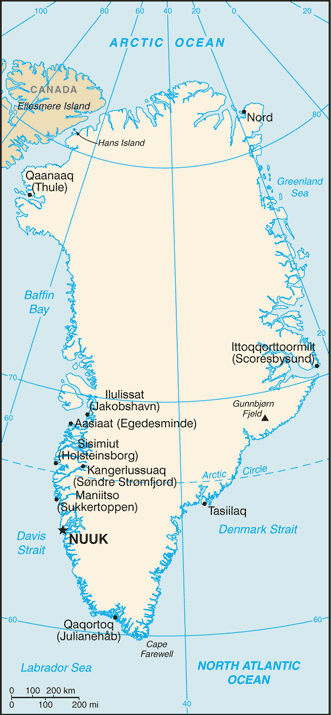
Terrain and Topography of Greenland: mountains, valleys, and plains.
Greenland, the world’s largest island, is renowned for its stunning and diverse terrain and topography. The landscape of Greenland is characterized by its vast ice sheet, majestic mountains, deep valleys, and spectacular plains. The island’s terrain is a result of millions of years of geological processes, including tectonic activity, glacial erosion, and volcanic eruptions. Greenland’s unique topography has a significant impact on its climate, wildlife, and indigenous communities. As one of the last remaining wilderness areas on Earth, preserving Greenland’s terrain is crucial for the planet’s biodiversity and the well-being of future generations. Greenland’s terrain is dominated by the Greenland Ice Sheet, which covers approximately 80% of the island’s surface. This massive ice sheet is the second-largest in the world, after Antarctica, and plays a crucial role in regulating the Earth’s climate. The ice sheet is up to 3 kilometers thick in some areas and has been shaped by millions of years of snowfall and glacial movement. In addition to the ice sheet, Greenland is also home to a diverse range of mountains, valleys, and plains, each with its own unique characteristics and ecological significance. The island’s terrain is a testament to the power of natural forces and the resilience of the Earth’s ecosystems. Summary Greenland’s terrain is characterized by its diverse topography, including mountains, valleys, and plains. The majestic mountains of Greenland are some of the highest and most impressive in the world, offering breathtaking views and challenging terrain for adventurers. The vast valleys of Greenland are home to stunning glaciers and provide important habitats for wildlife, making them a key area for conservation efforts. The spectacular plains...
History of Greenland
Greenland has a rich history of human habitation dating back over 4,500 years. The first inhabitants of Greenland were the Paleo-Eskimos, who arrived in the region around 2500 BThese early settlers were a nomadic people who relied on hunting and fishing for their sustenance. They lived in small, scattered settlements along the coast and were skilled in the use of stone tools and weapons. The next wave of inhabitants to arrive in Greenland were the Thule people, who migrated from present-day Alaska around 1000 AD. The Thule people were the ancestors of the modern Inuit and were skilled hunters and fishermen. They built more permanent settlements and developed a rich cultural tradition, including the creation of intricate carvings and sculptures. The Thule people thrived in Greenland for centuries, adapting to the harsh Arctic environment and developing a unique way of life. The early inhabitants of Greenland left behind a rich archaeological record, including well-preserved settlements, tools, and artwork. Their legacy can still be seen in the culture and traditions of modern-day Greenlandic society, which has deep roots in the ancient history of the region. Summary Early inhabitants of Greenland were the Paleo-Eskimos, who arrived around 2500 BC and lived a nomadic lifestyle, relying on hunting and fishing for survival. Norse settlements and exploration of Greenland began in the 10th century, with Erik the Red establishing the first Norse settlement in the 980s. Danish colonization of Greenland began in the 18th century, with the establishment of trading posts and missionary activity. Greenland played a strategic role in World War II as a base for the United States military, helping to...
Population Density of Greenland
Greenland, the world’s largest island, is known for its stunning natural landscapes, including vast ice sheets, towering mountains, and deep fjords. Despite its immense size, Greenland has a relatively small population, with just over 56,000 people calling the island home. This results in a low population density, with an average of only 0.14 people per square kilometer. The majority of Greenland’s population is concentrated along the coast, particularly in the southwest, where the capital city of Nuuk is located. The sparse population density is largely due to the island’s harsh Arctic climate and challenging terrain, which make large parts of the island uninhabitable. However, despite these challenges, there are still pockets of higher population density in certain urban areas, presenting unique opportunities and challenges for the people living there. Greenland’s population density is heavily influenced by its unique geographical and environmental factors. The island’s extreme Arctic climate, with long, harsh winters and short, cool summers, presents significant challenges for human habitation. In addition, much of Greenland is covered by a thick ice sheet, leaving only a small portion of the land suitable for settlement and agriculture. As a result, the majority of the population is concentrated in coastal areas where the climate is milder and the terrain more hospitable. Furthermore, the traditional Inuit way of life, which revolves around hunting and fishing, also plays a role in population distribution, as many communities are located near hunting grounds and fishing areas. These factors contribute to the low overall population density in Greenland, with the majority of the island remaining sparsely populated. However, despite these challenges, there are still areas of...
Climate Zones of Greenland: Different climate regions Of Greenland
Greenland, the world’s largest island, is known for its diverse and extreme climate zones. The island’s climate is largely influenced by its high latitude and proximity to the Arctic Circle. Greenland is divided into several distinct climate zones, each with its own unique characteristics and weather patterns. These climate zones include the Arctic, Subarctic, Tundra, Ice Cap, Maritime, and Highland zones. Each zone is defined by specific temperature ranges, precipitation levels, and vegetation types, making Greenland a fascinating study in climatology. The diverse climate zones of Greenland are a result of its vast size and varied topography. The island’s coastal regions experience milder temperatures due to the moderating effects of the surrounding ocean, while its interior and higher elevations are characterized by colder temperatures and more extreme weather conditions. Understanding the different climate zones of Greenland is essential for comprehending the island’s environmental diversity and the impact of climate change on its fragile ecosystems. In this article, we will explore each of Greenland’s climate zones in detail, providing insights into the unique features and challenges of each zone. Summary Greenland has a diverse range of climate zones, each with its own unique characteristics and weather patterns. The Arctic climate zone in Greenland is characterized by long, cold winters and short, cool summers, with temperatures rarely rising above freezing. The Subarctic climate zone experiences milder winters and warmer summers compared to the Arctic zone, with more precipitation throughout the year. The Tundra climate zone is marked by a short growing season, low temperatures, and little precipitation, making it difficult for trees to grow. The Ice Cap climate zone is the...
Political Boundaries of Greenland: Provinces, Districts, or Historical Boundaries.
Greenland, the world’s largest island, is an autonomous territory within the Kingdom of Denmark. It is located between the Arctic and Atlantic Oceans, and its political boundaries have evolved over time. The island is known for its stunning natural landscapes, including glaciers, fjords, and tundras. Greenland’s political boundaries are unique due to its status as an autonomous territory, which gives it a degree of self-governance while still being under the sovereignty of Denmark. This has led to a complex system of provinces and districts that govern the island’s administration and political affairs. Greenland’s political boundaries are crucial for understanding the island’s governance and administration. The island is divided into four provinces, each with its own distinct characteristics and governance structures. These provinces are further divided into a total of 74 districts, which play a significant role in local administration and decision-making. Understanding the political boundaries of Greenland is essential for comprehending the island’s unique position within the Kingdom of Denmark and its aspirations for greater autonomy and self-governance. Summary Greenland is an autonomous territory within the Kingdom of Denmark, with its own government and parliament. Greenland is divided into four provinces: Avannaata, Kujalleq, Qeqertalik, and Sermersooq. The provinces are further divided into 22 municipalities, which are then divided into districts. Greenland’s historical boundaries have been shaped by colonialism, treaties, and geopolitical interests. The evolution of Greenland’s political boundaries reflects the territory’s journey towards greater self-governance and independence. Provinces of Greenland Greenland is divided into four provinces: Avannaata, Kujalleq, Qeqertalik, and Sermersooq. Each province has its own distinct geographical, cultural, and administrative characteristics. Avannaata, located in the northwestern part of...
Cultural or Historical Sites of Greenland: Important Cultural Landmarks or Historical Sites In Greenland
Greenland, the world’s largest island, is a land of rich cultural and historical heritage. Its unique position between the North Atlantic and Arctic Oceans has made it a site of great importance throughout history. The island is home to a diverse range of cultural and historical sites, each with its own story to tell. From ancient Inuit settlements to Viking and Norse historical sites, as well as colonial era buildings and traditional Inuit cultural landmarks, Greenland’s cultural and historical sites offer a fascinating glimpse into the island’s past. The preservation and conservation of these sites are of utmost importance in order to protect and celebrate Greenland’s rich heritage for future generations. Summary Greenland is home to a rich cultural and historical heritage, with a diverse range of sites that reflect its ancient and colonial past. UNESCO has recognised several sites in Greenland as World Heritage Sites, including the Ilulissat Icefjord and the Aasivissuit-Nipisat area. Ancient Inuit settlements and archaeological sites provide valuable insights into the early history and way of life of the indigenous people of Greenland. Viking and Norse historical sites, such as the Hvalsey Church ruins, offer a glimpse into Greenland’s connections with European exploration and settlement. Colonial era buildings and settlements, such as the historic town of Nuuk, showcase the influence of Danish colonialism on Greenland’s architecture and urban development. Traditional Inuit cultural landmarks, such as the Qilakitsoq mummies and the Sermermiut valley, are important for preserving and celebrating Inuit cultural traditions and heritage. Preservation and conservation efforts are crucial for safeguarding Greenland’s cultural and historical sites for future generations, including measures to protect against climate...
Greenland (Kalaallit Nunaat (Greenlandic))
Greenland (Kalaallit Nunaat (Greenlandic)) Capital: Nuuk Population (Estimated July 2012): 57,695 Area: 2,166,086 km2 or 836,330 mi2 Currency: Danish Krone (DKK) Official Language: Greenlandic Political Information: Constitutional Monarchy and Parliamentary Democracy Official Religion: Lutheran Church of Greenland Highest Mountain: Gunnbjørn Fjeld at 3694m or 12, 119ft Largest River: Time Zone (GMT/UTC): Between +/-0:00 and -4:00 Wildlife: Counties/Provinces/States: 4 municipalities (kommuner, singular kommune); Kujalleq, Qaasuitsup, Qeqqata, Sermersooq Leaders: Queen Margrethe II with High Commissioner Mikaela Engell and Prime Minister Kuupik Kleist Greenland Greenland, the world’s largest island, is an autonomous territory within the Kingdom of Denmark. Located between the Arctic and Atlantic Oceans, it is known for its stunning natural beauty, including vast ice sheets, towering mountains, and deep fjords. With a population of around 56,000 people, most of whom are indigenous Greenlandic Inuit, the island has a unique culture and way of life. Greenlandic, an Inuit language, is the official language, and the majority of the population is Christian, with a small minority practising Inuit spiritual beliefs. The capital city, Nuuk, is a vibrant hub of culture and commerce, while the rest of the island is sparsely populated, with small settlements scattered along the coast. Greenland has a rich history dating back thousands of years, with evidence of human habitation going back to the Paleo-Eskimo people who first settled the island. In more recent history, Greenland was colonized by the Norse in the 10th century and later became a Danish colony in the 18th century. In 1979, Greenland was granted home rule by Denmark, and in 2009, it gained self-government, although it still relies on Denmark for defense and foreign affairs. The island’s economy is...

